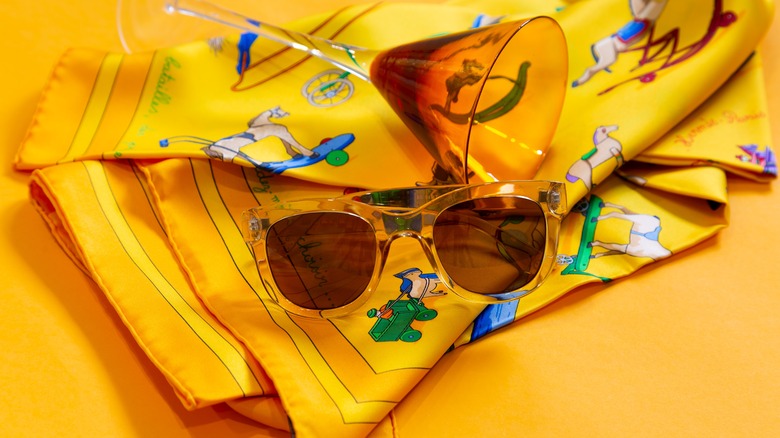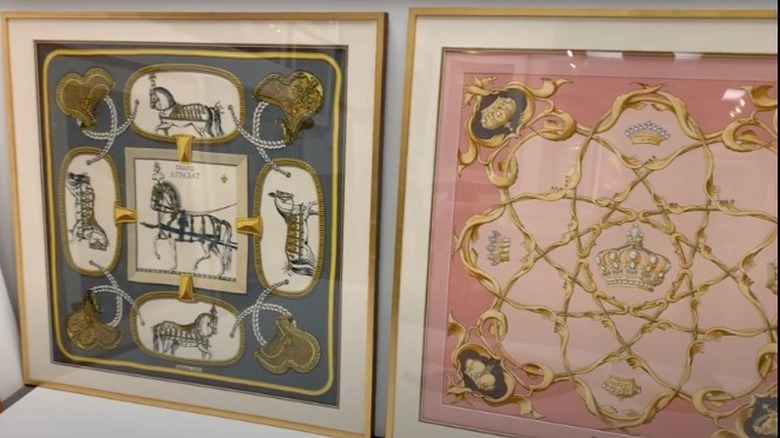How To Use Your Unique, Luxury Scarves As Decor When They're Too Pretty To Wear
There are fashionable ways to utilize silk scarves, from wearing them to tying them onto purses. However, expensive and designer or sentimental and vintage silk scarves may often feel too precious or valuable to wear on a day-to-day basis. They serve no one by sitting in your closet, though. So why not make use of these precious textiles by displaying them in your home?
One fantastic way to show off your beautiful scarf, or even a collection of them, is to frame it and hang it in your home. Most of these accessories bear stunning colors and striking patterns, making them a wonderful addition to your interior design scheme, similar to tapestries or hung rugs, but with a slightly refined upgrade. There are a few precautions to take to make sure you don't permanently damage these pricey and treasured items before you begin. For example, you'll want the foam core part of the frame to be acid-free because silk is a very delicate material, and you don't want the foam to eat away at it and damage it over time.
Find a frame and prepare the scarf
It's important to find the right frame. Practically, you won't want to have to stretch, contort, crease, or cut your scarf, so look for a frame that fits the dimensions exactly or is a little bit larger than your scarf. If your scarf is too small for most frames, look for ones with thicker or wider matting. Aesthetically, you'll want to make sure the frame's colors work cohesively with the scarf. A simple, minimalist black or white frame will always look great, but if you want to go bolder, make sure the colors in the scarf and the frame don't clash. Similarly, an overly ornate frame may distract from the scarf's pattern or make the piece as a whole feel too busy.
As for the scarf itself, you'll need to prepare it before framing so it's clean and wrinkle-free. This is generally as simple as washing first and then ironing or steaming it. Of course, silk is incredibly sensitive, so make sure you're taking extreme care during this process not to damage it. Use cold water and let it air dry initially, following up with a hair dryer on a low heat and fan setting. While it's damp, but no longer wet, lay it on your ironing board. Do not iron it directly — buffer the scarf from the iron with a pillowcase. Iron on a very low setting. If you steam it, don't position the steamer too close to the scarf.
Frame the scarf
Now that your scarf is ready and you have an appropriately sized frame, it's time to put the two together. You'll need to secure the scarf to the backing board in a way that will cause the least amount of damage. Two options are to use tape or pins. Strong tape can damage the delicate fabric over time, so only choose this option if you plan on framing this for a short time.
Pins will create minuscule holes in the silk, but they shouldn't be too severe or visibly noticeable. Choose very small pins — silk is lightweight enough that you don't need anything heavy duty — and make sure to leave some slack in the fabric when pinning the scarf to the board. If you pull it too tight, over time the fabric will stretch against the pins and make the pinholes wider. Once the scarf looks good, add the board to the frame, attach the backing, and hang it up as you would a painting.


